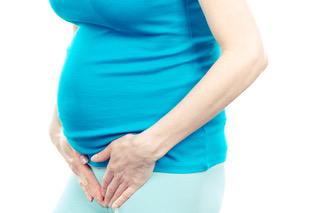Are you Suffering from Pelvic Girdle pain or SPD (PGP/SPD)?
It’s estimated that PGP affects up to one in five pregnant women to some degree. In most cases, it resolves after giving birth with the decrease in load on the pelvis.
Pelvic girdle pain (PGP) is a term used to describe pain, discomfort and instability in any of the pelvic joints: the sacroiliac joints at the back and/or pubic symphysis at the front.
"WHAT IS SPD?
The symphysis pubis is the joint connecting the pelvic bones at the front of the pelvis. During pregnancy, these joints widen in preparation for delivery.
SPD occurs when the joint becomes so relaxed that it is unstable.
In most cases, SPD doesn't occur on his own but in correlation with other problems (such as low back pain, sacroiliac problem..), hence the term commonly used is PGP.
PGP usually starts during pregnancy but it may occur during or following labour (if you had a difficult birth or were in an awkward position during labour and delivery for ex).
Common symptoms experienced by women with SPD are:
- Pain localised at the pubic symphysis (shooting, stabbing, burning...)
- Pain may radiate to the lower abdomen, groin, pelvic floor, inner thigh.
- Difficulty walking up/down stairs, getting up from a chair or sitting down, standing on one leg.
- Audible “clicking”/”grinding” sound from the pelvis
- Stiff hip and sensation that the hip is out of place
- Pain range from mild discomfort to debilitating.
What cause SPD?
During pregnancy, the body secrets the relaxin hormone which softens the ligaments throughout the body causing the joints to become increasingly flexible in preparation for the birth. Hence, widening and increasing the mobility of the symphysis pubis.
SPD occurs when the joint becomes so relaxed that it is unstable, causing pain and discomfort.
WHAT CAUSES PGP?
However, the ligamentous laxity caused by the hormonal changes during pregnancy is not the whole picture and other factors also contribute to the development of PGP/SPD during pregnancy.
Such as:
- Alterations in pelvic stability and function (pelvic and SIJ asymmetry, weakening muscles, poor hip function...)
- Previous pelvic or back problem or injury
- Physical strenuous work or activity
- Poor posture, lack of exercise and excessive weight gain
- Previous difficult deliveries
- Underlying joint hypermobility
Besides, in cases where there was a misaligned pelvis before the starts of the pregnancy, the hormones potentially create a more vulnerable pelvis base that has difficulty to support the extra stresses and postural changes of pregnancy.
What can I do to relieve the symptoms?
- During pregnancy, it is important to keep active. Mild to moderate exercises are recommended such as walking, pregnancy pilates… (Doing clinical pilates is can also help prevent PGP from coming about)
- Always stretch following activity and rest more often.
- Avoiding activities which cause pain or discomfort (walking fast, climbing stairs..).
- Avoid squatting and opened legged postures (keeping knees together when getting in and out of the car or bath…).
- Adopt a good posture (avoid bending, twisting).
- Sleeping with a small pillow between the knees can help to reduce the pain and support the pelvis.
- Wearing a pelvis belt, only a few hours a day especially when standing for long, can bring some relief.
What osteopathy can do?
Commonly during pregnancy, the hip joints start to become laterally rotated to accommodate the bump and stabilize the anterior weight gain. These put increased stresses on the symphysis pubis.
As the abdomen enlarges, your abdominal muscles naturally get longer, thinner and less supportive, creating increased demand on your inner thigh muscles. As the inner thigh muscles tighten and shorten, it pulls the symphysis pubis laterally and inferiorly.
Your osteopath is trained to assess the body holistically and will use gentle techniques to improve joints mobility and ease the supportive muscles and ligaments making sure your right and left sides are balanced.
Besides, your osteopath will also address any tension or restriction in your body that might have been present before the pregnancy and that have predisposed you to pelvic pain.
Finally, by restoring the balance to your body, osteopathy can help your body to adapt to the normal physiological changes of pregnancy.
Advice on good posture and tailored exercises will also be provided to assist in easing the pain and to support your body throughout pregnancy.
Clinical Pilates is also recommended not only to ease the symptoms of PGP, but also to prevent PGP from coming arising.
Feel free to contact the clinic if you want to see one of our specialised osteopath or Pilates instructors.
Courtesy of OC Osteopath, Written by Sabrina Peyandane, Cranial Osteopath


